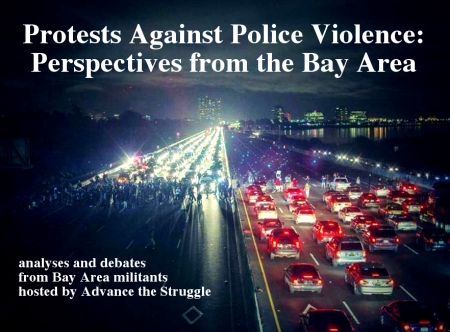These protesters have been tried in the public arena and left open to vigilante justice and a lifetime of being associated with crimes for which they have yet to be convicted, with a permanent Internet trail for any future employer to consider. Far from critical journalism, this is state propaganda at its finest.
Search the AS blog
-
Recent Posts
Recent Comments
- Africa anti-racism austerity Bailout bay area Black Lives Matter blacklivesmatter black panthers black people budget cuts california Capitalism class struggle colonialism crisis culture Economic crisis education Feminism Flyers gender general strike history ilwu immigration imperialism internationalism IWW labor la pena Lenin longshore workers march 4 march 4th marikana miners Marxism miners music nationalism neoliberalism News Oakland Obama occupation occupy oakland OEA oscar grant palestine Police Brutality race racism rank and file Repression resistance revolution revolutionary organization riots seattle Socialism south africa Strike strikes Students Student Struggle student worker unity theory trotskyism Unions Videos Violence White Women workers working class workplace organizing
Categories
- Analysis/Theory
- Bay Area Class Struggle
- book review
- Colonialism
- Culture
- Debates
- Event Announcements
- Flyers
- gentrification
- History
- International Labor History
- Literature
- Music
- News Analysis
- Pamphlets
- Police Brutality Protests 2014
- Practical Skills
- Racial Unity in the Class Struggle
- Raw Reflections
- Resistance News
- Resources
- Study Guides
- Theater
- Uncategorized
- US Labor
- Videos
- Workers' Inquiry
Pages
Blogroll
Top Posts
Blogroll
Archives
- January 2016 (2)
- December 2015 (2)
- November 2015 (3)
- July 2015 (1)
- May 2015 (2)
- April 2015 (1)
- March 2015 (1)
- January 2015 (1)
- December 2014 (6)
- November 2014 (2)
- October 2014 (2)
- September 2014 (1)
- August 2014 (3)
- July 2014 (2)
- June 2014 (3)
- May 2014 (1)
- April 2014 (3)
- March 2014 (3)
- February 2014 (2)
- December 2013 (1)
- November 2013 (1)
- August 2013 (2)
- July 2013 (4)
- June 2013 (4)
- May 2013 (1)
- April 2013 (3)
- March 2013 (17)
- February 2013 (20)
- January 2013 (1)
- December 2012 (3)
- November 2012 (8)
- October 2012 (5)
- September 2012 (13)
- August 2012 (7)
- July 2012 (2)
- June 2012 (3)
- May 2012 (1)
- April 2012 (2)
- February 2012 (1)
- January 2012 (1)
- December 2011 (1)
- November 2011 (2)
- October 2011 (1)
- August 2011 (1)
- July 2011 (4)
- June 2011 (2)
- May 2011 (5)
- April 2011 (1)
- February 2011 (1)
- January 2011 (2)
- December 2010 (3)
- November 2010 (1)
- October 2010 (4)
- September 2010 (2)
- August 2010 (3)
- July 2010 (4)
- June 2010 (3)
- May 2010 (3)
- April 2010 (3)
- February 2010 (3)
- January 2010 (3)
- December 2009 (7)
- November 2009 (1)
- October 2009 (1)
- September 2009 (3)
- August 2009 (5)
- July 2009 (10)
- June 2009 (5)
- May 2009 (28)
- February 2009 (4)
- January 2009 (2)
-
Join 222 other subscribers



 We are some members of Advance the Struggle, a New York revolutionary collective, and Black Orchid Collective who have been travelling together and discussing during the lead up to the Everything for Everyone Conference in Seattle. Through these conversations, we have been brainstorming ideas for how we can build together over the long term. The following is the results of these brainstorms. To be clear, this is a discussion document, NOT a formal position representing our groups. It is also not something we aim to push as an immediate outcome of the
We are some members of Advance the Struggle, a New York revolutionary collective, and Black Orchid Collective who have been travelling together and discussing during the lead up to the Everything for Everyone Conference in Seattle. Through these conversations, we have been brainstorming ideas for how we can build together over the long term. The following is the results of these brainstorms. To be clear, this is a discussion document, NOT a formal position representing our groups. It is also not something we aim to push as an immediate outcome of the  movement that argued occupation as a tactic was akin to property destruction and thus destructive.
movement that argued occupation as a tactic was akin to property destruction and thus destructive.

You must be logged in to post a comment.